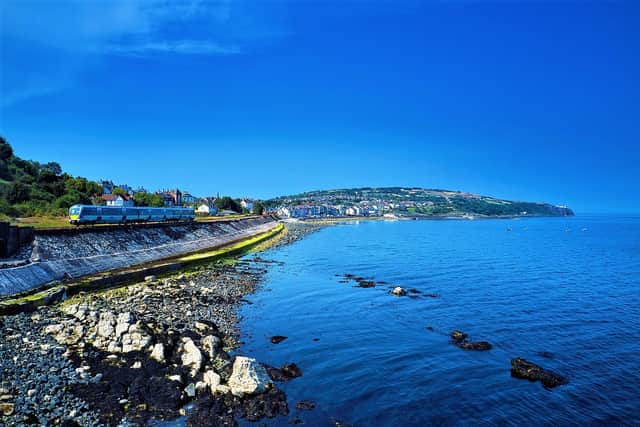New railways west of the Bann 'would help people feel part of Northern Ireland' says one campaigner while another adds that speeds of 120mph are far from 'edgy'
and live on Freeview channel 276
Aaron Vennard said among the benefits of proposals like a Londonderry-Portadown line would help take pressure of an “unmanageable” road network.
Meanwhile fellow rail activist Steve Bradley said the envisaged speed of 200kmph (125mph) on that line is nothing “edgy”, adding that trains elsewhere have been doing speeds like that for decades.
Advertisement
Hide AdAdvertisement
Hide AdThey were reacting to a cluster of stories in the News Letter about infrastructure minister John O’Dowd’s interest in creating such a new rail line.


Mr Vennard is from the group ‘Circle Line’, which hopes to see a kind of railway belt created around Belfast.
On the subject of whether a Portadown-Londonderry line could work given the sizes of the populations in both towns, he said: “Omagh, Dungannon and Strabane are already larger than many of the existing stops served by the network, notably Larne and Cullybackey, nevermind Magheramorne.
"We have increased road traffic coming not just between towns in the west, but commuter traffic coming into Belfast.
Advertisement
Hide AdAdvertisement
Hide Ad"To think that we spent £400m upgrading the Westlink, and at the same time closed the Knockmore Line, and traffic didn't disappear.
“We also have a hugely expansive road network (15,000 miles of tarmac) that has now become unmanageable [due] to maintenance and pothole repair."
He added it would cut car accidents, and help Londonderry claim its “natural title of north-west regional hub”.
Finally he said that “there are those in the West who have no equity in ‘project NI’ because they have no visible public services; if we want everyone personally investing in NI then expanding the railway network absolutely should happen”.
Advertisement
Hide AdAdvertisement
Hide AdMeanwhile Mr Bradley of Into the West said: “The proposed speed for the Derry-Portadown line is 200kmph, or 120 miles per hour.
"That will make it slower than the Intercity125 trains that were the standard across Britain 50 years ago and have since been superseded by even faster (but non-high speed) trains there.
"This is not edgy technology – it's just bog standard stuff.”
The new line is part of a plan to drastically expand rail transport across the whole island of Ireland.
Advertisement
Hide AdAdvertisement
Hide AdIt comes in the form of something called the All Island Strategic Rail Review – a kind of joint plan between the two governments on how the railways should be run in the decades ahead.
It is still being worked on so has not been formally adopted as policy, but among the things it envisages are a new rail line linking Portadown, Dungannon, Omagh, Strabane and Londonderry with trains travelling at up to 200kmph (124mph), far faster than any which currently operate in Northern Ireland, where the maximum speed is currently 90mph.
There is also a proposed new line linking Armagh City with Mullingar, though it may not be so fast.
These new lines, plus a new direct Lisburn-Newry one, would all be part of a general upgrade with the aim of making sure “core inter-city” services had top speeds of 125mph with "regional and rural” lines being at least 75mph.
Advertisement
Hide AdAdvertisement
Hide AdThe report considered “a 300 km/h (186mph) high speed” network, but the benefits would be “significantly outweighed by the costs”.
Asked if he feels a 124mph line connecting Portadown and Londonderry is feasible, Mr Conway indicated that is actually about the speed you would expect on any newly-built railway these days.
“All new rail investment would be for electrification, and the standard for that would be about 125mph in terms of the capability,” he said.
"Obviously, the route the line takes, the infrastructure that can be put in – depending on lots of different surveys that still have to be done – will determine the final line speed overall, because there could be crossings, halts, stops, and that’ll all take effect on what the journey time is.
"But, overall, that’d be the standard for any new build on a railway.”